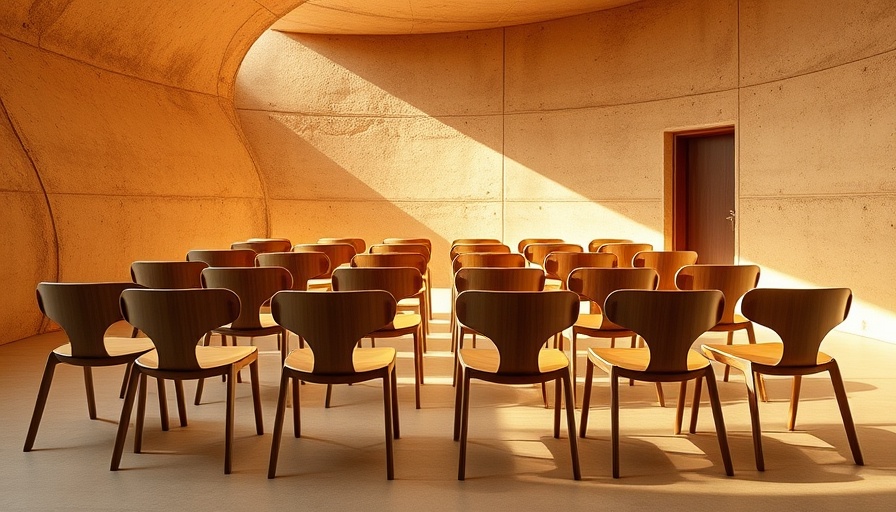
The Art of Planning: Key Strategies for an Unforgettable Architecture Conference
When organizing an architecture conference, planning goes well beyond simply booking a venue and compiling a list of speakers. These gatherings serve as vital platforms where professionals, educators, and enthusiasts converge to exchange innovative ideas and foster valuable networks. The success of such an event hinges on meticulous planning, keen attention to detail, and strategic execution. Here are insightful tips to ensure your architecture conference is memorable and impactful.
Crafting a Compelling Theme Aligned with Your Audience
A clear and engaging theme is the backbone of your conference. In the realm of architecture, the subject can span a wide array of disciplines, from urban design to sustainable architecture. To optimize relevance and engagement, consider the latest trends—are smart cities or green designs at the forefront? Tailoring your theme helps in attracting the right audience, whether they are students of architecture, practicing architects, or investors looking for insights. Having a well-defined target demographic also streamlines speaker selection and content creation.
Choosing an Inspiring Venue in Fairfield County
The venue sets the tone for your architecture event. Look for a location that not only aligns with the aesthetics of architecture but also provides functional space for panel discussions, workshops, and exhibitions. A beautifully designed venue, rich in natural light and mindful of flow, can significantly enhance attendee engagement. Accessibility is also crucial; ensure the venue is convenient for both local residents and out-of-town participants. Additionally, booking early allows you to negotiate favorable terms and adapt to any unforeseen changes.
Documenting the Experience: The Importance of Visuals
High-quality visual documentation is essential for maximizing the impact of your conference. Engaging a professional photographer ensures that key moments—such as keynote speeches and spontaneous networking interactions—are captured effectively. These images not only support marketing efforts for future events but also serve as a lasting record of the ideas shared and connections made. They embody the conference's spirit and can be valuable assets for sponsors and stakeholders.
Recruiting Industry Leaders for Credibility
The reputation of your architecture conference largely depends on the speakers you lineup. Featuring industry leaders—such as award-winning architects or visionary thinkers—can elevate your event's standing, drawing in both attendees and media interest. Collaboration with established academic institutions and architectural firms not only aids in securing funding but also enhances your conference agenda with rich, diverse insights from the industry. Aim to strike a balance between inspirational talks about innovative technologies and practical sessions covering regulatory changes in architecture.
Engagement: Turning Passive Attendees into Active Participants
Enhancing engagement is critical for ensuring attendees leave feeling enriched. Incorporate interactive sessions into your agenda, such as breakout discussions, design workshops, or live critique sessions that foster dialogue and interaction. Utilizing event apps or interactive displays can further enhance audience engagement, inviting attendees to connect and share their experiences. After the event, consider following up with participants to maintain momentum, share key takeaways, and build lasting relationships.
The Sustainable Impact of Architecture Conferences
In an era where environmental sustainability is paramount, architecture conferences stand as vital forums for discussing ecological impacts in design. Homeowners and residents can glean valuable insights from these discussions, particularly as architectural trends evolve to prioritize sustainability. By attending these events, they can learn about innovative materials, eco-friendly landscaping techniques, and modern living solutions that can be integrated into their own homes. For those in Fairfield County Connecticut, attending a well-organized architecture conference could also mean finding local professionals who specialize in sustainable designs that align with their vision.
If you're looking to host an unforgettable conference that fosters networking and innovation, consider these essential tips. Engaging with experts, creating a relevant theme, and emphasizing interactivity will not only enhance the attendee experience but also contribute positively to the architectural community.
Ready to dive into the world of architecture? Start planning your conference today to create an enriching environment that inspires change and creativity!
 Add Row
Add Row  Add
Add 




Write A Comment